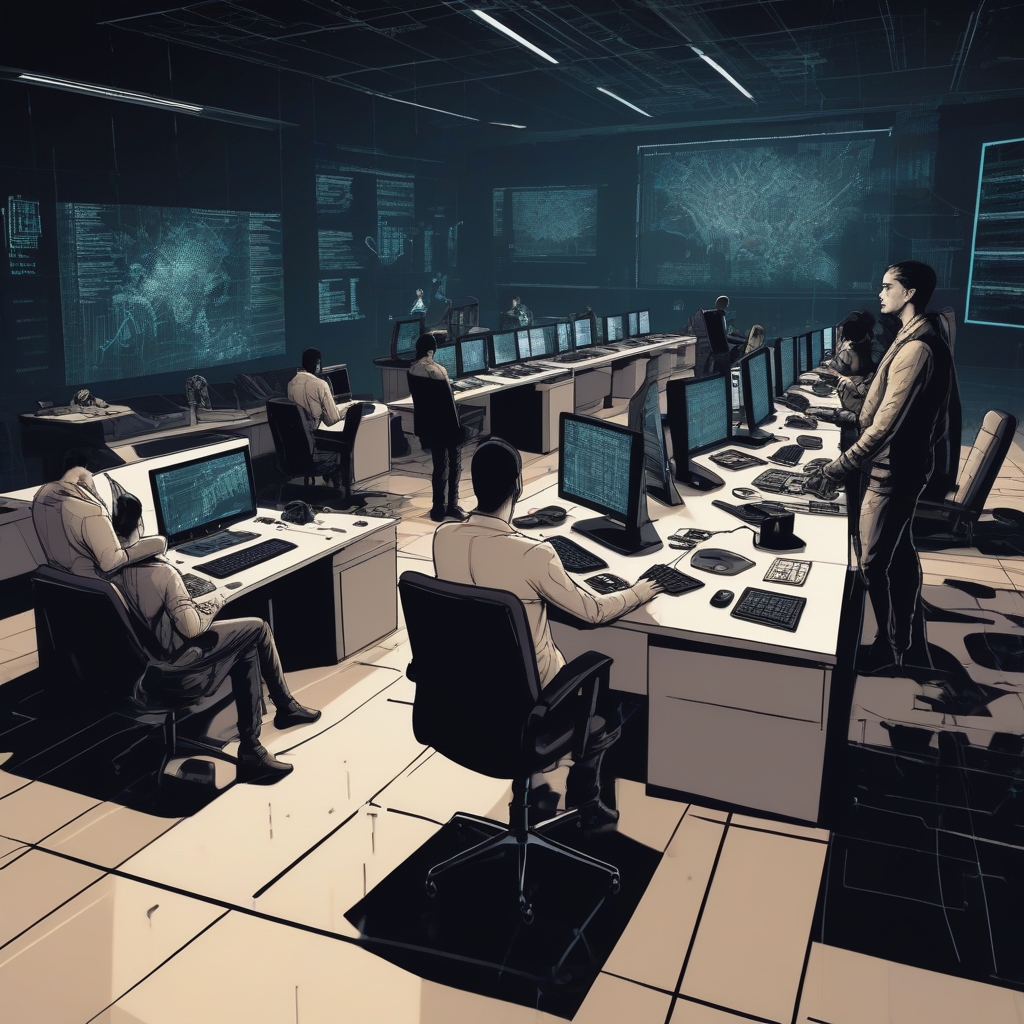## The Advent of AI Democratization in Cybersecurity
The rise of artificial intelligence (AI) democratization is a double-edged sword. On one hand, it provides unprecedented opportunities for innovation and problem-solving. On the other hand, it makes cybersecurity threats more accessible to everyone, including malicious actors. As AI tools become increasingly accessible, the nature and scale of cyber threats are evolving at an alarming pace.
### The Fundamentals of AI Democratization
AI democratization refers to the process of making advanced AI tools and technologies accessible to a wider audience. This includes individuals, startups, and even enthusiasts who lack the traditionally required expertise or resources. Cloud platforms, open-source software, and AI-as-a-Service (AIaaS) are some of the key enablers of this movement.
- **Cloud Platforms:** Services like Google Cloud AI and Amazon Web Services (AWS) offer scalable AI tools that can be accessed by virtually anyone.
- **Open-Source Software:** OpenAI’s GPT models and TensorFlow are examples of powerful, freely available AI frameworks.
- **AI-as-a-Service:** Companies can access pre-built AI models for tasks like natural language processing (NLP) and computer vision without developing their own infrastructure.
### The Double-Edged Sword of Accessibility
While democratization promotes innovation, it also lowers the barrier to entry for cybercriminals. The sophistication of AI tools made available to the public enables even low-skilled hackers to exploit vulnerabilities.
Accessibility translates to:
- **Ease of Use:** User-friendly interfaces mean that even those with limited technical know-how can deploy sophisticated AI models.
- **Low Cost:** Reduced expenses associated with using cloud services make it feasible for smaller entities to engage in nefarious activities.
- **Scalability:** AI allows for automated, large-scale attacks that would be impossible for human attackers to execute manually.
### The Evolution of Cyber Threats
With AI tools becoming more ubiquitous, there is a noticeable shift in the types of cyber threats and the strategies employed by hackers.
#### Automated Phishing Attacks
Phishing attacks are no longer dependent solely on human effort. AI can now generate convincing spear-phishing emails, making use of NLP to craft messages that are indistinguishable from legitimate communications. Machine learning algorithms can analyze vast amounts of data to identify potential targets, further enhancing the effectiveness of these attacks.
#### Deepfakes and Social Engineering
AI democratization has led to the proliferation of deepfake technology. Malicious actors can create hyper-realistic videos and audio clips that can be used for blackmail, misinformation campaigns, or to defame individuals and organizations. The combination of deepfakes and social engineering exponentially increases the potential for damage.
#### AI-Powered Malware
Traditional malware requires frequent updates to remain undetected. With AI, however, malware can adapt in real-time, learning from its environment and updating its behavior to avoid detection. This makes AI-powered malware far more resilient and difficult to counteract.
### Steps to Mitigate AI-Driven Cyber Threats
The growing accessibility of AI technology necessitates a proactive approach to cybersecurity. Organizations must invest in robust defense mechanisms to counter the evolving threat landscape.
#### Enhanced AI-Based Defense Systems
As attackers leverage AI tools, defenders must also harness the power of AI to identify and respond to threats dynamically. Machine learning algorithms can analyze patterns and detect anomalies in real-time, offering a stronger front against AI-driven attacks.
#### Employee Training and Awareness
Despite advanced technologies, human error remains a significant vulnerability. Educating employees about the latest cyber threats and proper security protocols can significantly reduce the risk of successful attacks. Training programs should include:
- **Recognizing Phishing Attempts:** Training on identifying suspicious emails and messages.
- **Password Management:** Emphasizing the importance of strong, unique passwords and the use of password managers.
- **Incident Reporting:** Establishing a clear protocol for reporting potential security breaches.
#### Strengthening Regulatory Frameworks
Policymakers must update regulations to keep pace with technological advancements. Legislation should mandate stringent security protocols for AI tool development and deployment, reducing the risk of these tools falling into the wrong hands.
### Collaboration and Information Sharing
Cybersecurity is a collective effort. Industry-wide cooperation, sharing threat intelligence, and collaborating on best practices can amplify the defensive capabilities of individual organizations.
- **Information Sharing:** Organizations should engage in forums and networks that promote the sharing of threat data and defensive strategies.
- **Public-Private Partnerships:** Governments and private enterprises must work together to develop comprehensive security measures.
- **Open Standards:** Developing and adhering to open standards can help in the smooth exchange of information between different cybersecurity tools and platforms.
### Conclusion
The democratization of AI presents both unparalleled opportunities and significant challenges. As cybersecurity threats become more accessible and sophisticated, organizations and individuals must remain vigilant and proactive. By investing in advanced defense systems, enhancing employee training, and fostering collaboration, we can mitigate the risks posed by the increasing accessibility of AI technologies. The battle against cyber threats is ongoing, and our strategies must evolve in tandem with the advancements in AI.

Leave a Reply